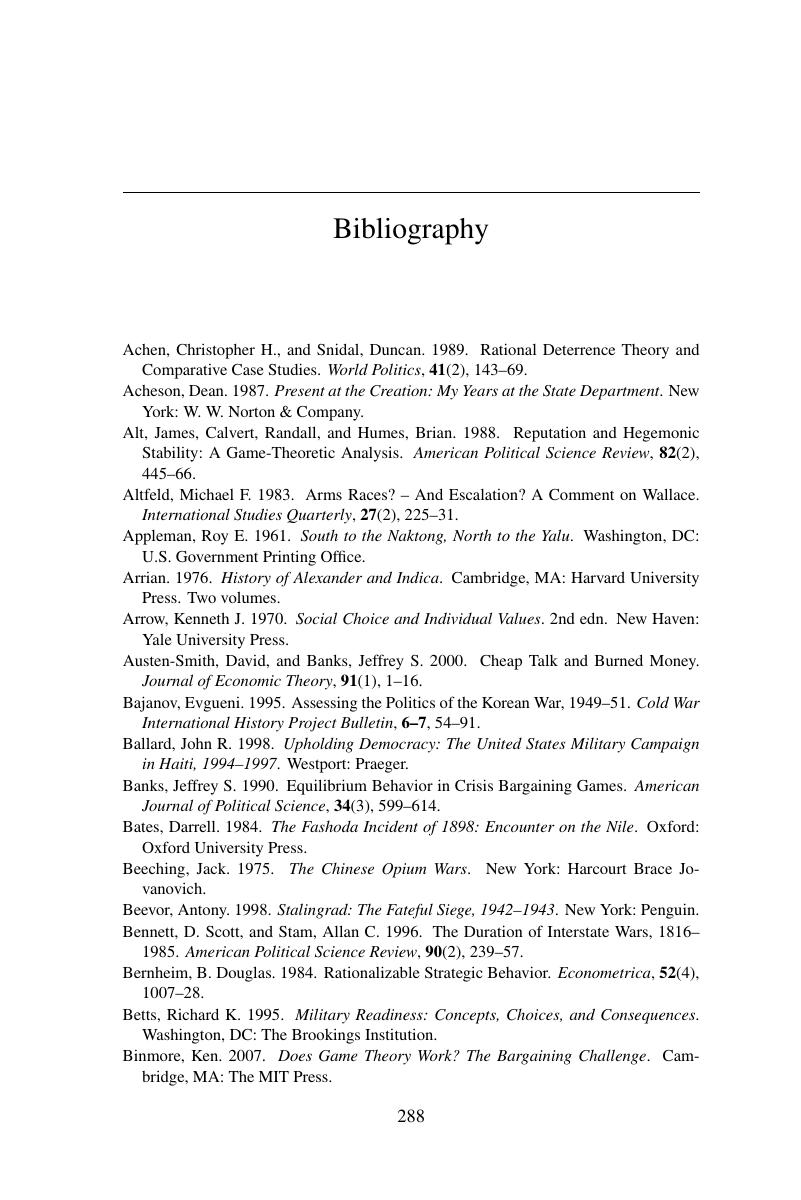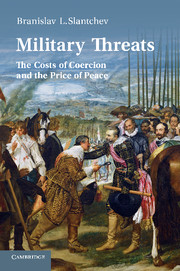Book contents
- Frontmatter
- Contents
- List of figures
- List of tables
- Acknowledgements
- Part I Coercion and Credibility
- Part II A Theory of Military Threats
- Part III Elements of Militarized Deterrence
- Part IV Conclusions
- Appendix A Formalities for Chapter 2
- Appendix B Formalities for Chapter 3
- Appendix C Formalities for Chapter 4
- Appendix D Formalities for Chapter 5
- Bibliography
- Index
- References
Bibliography
Published online by Cambridge University Press: 03 February 2011
- Frontmatter
- Contents
- List of figures
- List of tables
- Acknowledgements
- Part I Coercion and Credibility
- Part II A Theory of Military Threats
- Part III Elements of Militarized Deterrence
- Part IV Conclusions
- Appendix A Formalities for Chapter 2
- Appendix B Formalities for Chapter 3
- Appendix C Formalities for Chapter 4
- Appendix D Formalities for Chapter 5
- Bibliography
- Index
- References
Summary

- Type
- Chapter
- Information
- Military ThreatsThe Costs of Coercion and the Price of Peace, pp. 288 - 302Publisher: Cambridge University PressPrint publication year: 2011



